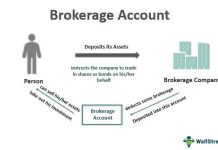The Strategic Advantages: Navigating the Benefits of Zero Trust Security
In the rapidly evolving landscape of cybersecurity, Zero Trust emerges as a beacon of defense against sophisticated threats. This article delves into the foundations and key advantages of Zero Trust security, transforming how organizations safeguard their digital assets.
Understanding the Foundations of Zero Trust
Zero Trust is not just a concept; it’s a paradigm shift in cybersecurity philosophy. Gone are the days of perimeter-based security. Zero Trust operates on the principle of distrust, assuming that threats may already exist inside the network. This section explores the fundamental principles that underpin the Zero Trust approach.

Key Components of a Robust Zero Trust Framework
Zero Trust is a holistic security model encompassing various components. From stringent identity verification to continuous monitoring, each element plays a crucial role. Here, we dissect the essential components that constitute a robust Zero Trust framework, providing a roadmap for organizations looking to fortify their defenses.
Securing Sensitive Information in a Zero Trust Model
The cornerstone of Zero Trust lies in securing sensitive data. By abandoning the notion of implicit trust, organizations can implement granular controls over data access. This section elaborates on how Zero Trust prevents unauthorized access and safeguards critical information from both external and internal threats.
Adaptive Data Protection Strategies
Data protection is not a static task but an ongoing process. Zero Trust introduces adaptive strategies that respond to the evolving threat landscape. We explore the dynamic nature of data protection within a Zero Trust environment, ensuring that security measures adapt in real time to emerging risks.
Strengthening Defenses Against Cyber Threats
Traditional network perimeters are no longer sufficient in the face of advanced cyber threats. Zero Trust advocates for a robust defense mechanism that assumes no area of the network is inherently secure. This section outlines how Zero Trust strengthens defenses, creating layers of security that challenge and repel potential threats.
Dynamic Network Segmentation in Zero Trust
Network segmentation is redefined in the zero-trust paradigm. Instead of static divisions, Zero Trust introduces dynamic segmentation that adjusts based on user behavior and contextual factors. We delve into the intricacies of dynamic network segmentation and its role in minimizing the attack surface.
Adaptive Risk Management
In the ever-evolving cybersecurity landscape, Zero Trust introduces a proactive approach to risk management. By continuously monitoring user behavior and network activities, organizations can identify potential risks before they escalate. This section explores how Zero Trust facilitates early risk detection and the implementation of proactive mitigation strategies.
Continuous Monitoring for Adaptive Security Measures
Zero Trust thrives on continuous vigilance. Real-time monitoring is a cornerstone of adaptive security within this model. We delve into the importance of continuous monitoring, how it enables adaptive security measures and the role it plays in maintaining a robust defense posture against emerging threats.
Verifying and Validating User Identities
In a zero-trust environment, user identities become the focal point of security. This section elucidates the meticulous process of verifying and validating user identities, ensuring that only authorized individuals gain access to sensitive resources. Robust identity verification forms a crucial layer in the multi-faceted defense strategy of Zero Trust.
Role of Multi-Factor Authentication in Zero Trust
Multi-factor authentication (MFA) is a linchpin in the Zero Trust arsenal. By requiring users to authenticate their identity through multiple factors, organizations add an extra layer of security. Here, we explore the role of MFA in Zero Trust and how it fortifies user identity protection against diverse cyber threats.
Safeguarding Endpoints in the Zero Trust Landscape
Endpoints represent potential entry points for cyber threats. Zero Trust extends its security umbrella to safeguarding devices, ensuring that endpoints are not vulnerable links. This section elucidates the strategies and mechanisms employed in securing endpoints within the Zero Trust landscape.
Device Trustworthiness and Access Controls
Zero Trust emphasizes the importance of trustworthy devices. Understanding the trustworthiness of devices and implementing stringent access controls form the crux of this section. Discover how Zero Trust ensures that only secure devices gain access to critical resources, minimizing the risk of compromise.
Zero Trust and Cloud Security
Extending Security to Cloud Environments
As organizations increasingly embrace cloud computing, Zero Trust extends its protective reach to cloud environments. This section explores how Zero Trust principles are seamlessly integrated into cloud architecture, ensuring a consistent and robust security posture across both on-premises and cloud-based infrastructures.
Integration of Zero Trust Principles in Cloud Architecture
Zero Trust is not confined to traditional boundaries; it adapts to the dynamic nature of cloud architectures. Here, we delve into the integration of Zero Trust principles, such as continuous monitoring and identity-centric security, into cloud environments. Learn how Zero Trust aligns with the scalability and flexibility demands of modern cloud infrastructures.
Zero Trust Strategies to Mitigate Insider Risks
Insider threats pose a significant risk to organizational security. Zero Trust employs specific strategies to mitigate these risks effectively. This section explores how Zero Trust addresses insider threats by implementing least privilege access, behavioral analytics, and other advanced techniques to bolster resilience against internal risks.
Monitoring and Addressing Insider Threats Effectively
Continuous monitoring plays a pivotal role in Zero Trust’s approach to insider threats. By closely monitoring user activities and behavior, organizations can promptly detect and address insider threats. Discover the proactive measures Zero Trust employs to ensure early detection and response to potential risks originating from within the organization.
Real-world Success Stories
Case Studies: Organizations Benefiting from Zero Trust
Explore real-world success stories of organizations that have embraced Zero Trust with tangible results. From improved security postures to mitigating sophisticated cyber threats, these case studies showcase how diverse industries have successfully implemented and benefited from the Zero Trust security model.
Learning from Practical Implementations and Outcomes
Learn valuable lessons from practical implementations of Zero Trust. This section provides insights into the outcomes experienced by organizations across various sectors. Understanding how Zero Trust has enhanced its cybersecurity landscape can serve as a roadmap for others looking to embark on a similar journey.
Conclusion
In concluding our exploration of the benefits of Zero Trust security, it’s evident that this approach represents a paradigm shift in cybersecurity. From dynamic network segmentation to adaptive risk management, Zero Trust addresses the evolving challenges of the digital landscape. As organizations navigate the complexities of modern cybersecurity threats, embracing Zero Trust becomes not just a choice but a strategic imperative for safeguarding digital assets.




